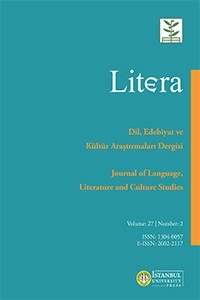Page Layout and Braiding in Hergé’s Seven Crystal Balls
In the last years of the 20th century, the Belgian scholar Thierry Groensteen developed a new way of analyzing comics in his book Système de la bande dessinée. The starting point is the notion of “iconic solidarity”, by which separate but interrelated images form a significant unity. The relations that rule this iconic solidarity are called the “arthrology”, governed by three fundamental operations: (a) Page layout as a result of gridding, or the distribution of the physical space; (b) Breakdown, or the division of the narrative content in panels; and (c) Braiding, or the interrelation of panels from a distance and not by narrative principles. All these operations create a delicate network in comics and any manipulation can alter it with negative results. A clear example can be found in Hergé’s The Seven Crystal Balls. It had a very eventful publication process: first as daily strips, then as album pages, and last as double pages à l’italienne, occupying the whole width of the two pages. The pages prepared for the album suffered notable alterations in the braiding of the panels with the change of page layout from single page to double page. In this paper we will analyze the paradigmatic and syntagmatic consequences of changes in the conception of the page.
Keywords:
Groensteen, braiding, page layout, system of comics Hergé,
___
- Baetens, J. (1989). Herge ecrivain. Paris: Flammarion (2006, corrected and augmented edition). google scholar
- Bartual Moreno, R. (2010). Poetica de la narracion pictografica: de la tira narrativa al comic (Ph. D. Thesis). Madrid: Universidad Autonoma de Madrid. google scholar
- Bremond, C. (1966). “La Logique des possibles narratifs”. Communications (Recherches semiologiques: l’analyse structurale du recit) n° 8, pp. 60-76. google scholar
- Brown, M. (2017, September 6). “On Watchmen and Shakespeare, the 9-Panel Grid and Iambic Pentameter”. https://comicbook.com/comics/news/on-watchmen-and-shakespeare-the-9-panel-grid-and-iambic-pentameter/ Last visited 10/10/2020. google scholar
- Castillo, F. (2011). Tintn-Herge. Una vida delsiglo XX. Madrid: Forcola. google scholar
- Fresnault-Deruelle, P. (1990). “Semiotic Approaches to Figurative Narration”. In T. Sebeok (Ed.), The Semiotic Web 1989. Berlin, New York: Mouton de Gruyter, pp. 587-603. google scholar
- Goddin, P. (2014a). «Recherches et commentaires (1)». In Herge, La Malediction de Rascar Capac. 1. Le Mystere des boulesdecristal. Bruxelles: Editions Moulinsart/Casterman. google scholar
- Goddin, P. (2014b). «Recherches et commentaires (2)». Dans Herge, La Malediction de Rascar Capac. 2. Les Secrets du Temple du soleil. Bruxelles: Editions Moulinsart/Casterman. google scholar
- Gomez Salamanca, D. (2013). Tebeo, comic y novela grafica: La influencia de la novela grafica en la industria del comic en Espana (Ph. D. Thesis). Barcelona: Universitat Ramon Llull. google scholar
- Greimas, A. J. (1966). Semantica estructural. Investigacion metodologica. (A. de la Fuente, Trans.). Madrid: Gredos, 1971. google scholar
- Groensteen, T. (1999). The System of Comics. (B. Beaty, & N. Nguyen, Trans.). Jackson: University Press of Mississippi, 2007. google scholar
- Groupe p. (1977). Rhetorique de la poesie. Lecture lineaire, lecture tabulaire. Paris: Editions du Seuil, 1990. google scholar
- Gubern, R., & Gasca, L. (1988). El discurso del comic. Madrid: Catedra. google scholar
- Herge. (2014). La Malediction de Rascar Capac. 1. Le Mystere des boules de cristal. Bruxelles: Editions Moulinsart/ Casterman. google scholar
- Munoz, D. (2020). Escribir con vinetas, pensar en bocadillos. Manual deguion de comic. Madrid: Es Pop Ediciones. google scholar
- Peeters, B. (1988). Herge en el pa^s de los incas. In Herge, El templo del sol (version original) (pp. 7-19) (Trans. by J. Renau). Barcelona: Juventud, 1991. google scholar
- Peeters, B. (2002). Herge, fils de Tintin. Paris: Flammarion, 2006. google scholar
- Sadoul, N. (1983). Entretiens avec Herge. Tintin et moi. Bruxelles: Casterman. google scholar
- Başlangıç: 1954
- Yayıncı: İstanbul Üniversitesi
